Christmas Roast Beef

Enzo Sisto 27 december 2020
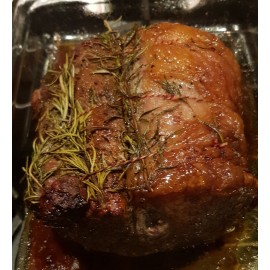
If you have a nice piece of beef it is useful to have a method to optimize and standardize the result.
Get the most out of the piece you bought or they gave you in only 4 steps.
In preference I should chose a piece of loin (longissimus dorsi is one of the major back muscle) “hotel cut”, but a nice fillet or rump is also fine. From 1.5 to 2.0 kg for 5/6 people.
Choose a French Limousin meat. The best Limousins beef come from the beautiful hills and woods of the Limousin Region in France. Do not accept anything else. The authentic original one. Heifer or young bull. Marbled just a bit, almost not visible.
You could also try a smooth Dutch Premium Select Dubbel-Doel fat cow or an Angus Aberdeen (…yes sure: only the Scottish is the real one!).
Better if dry-aged at least 4 weeks. If this is not possible follow the procedure for enzymatic tenderizing (8.5 to 9 hours) of “step 2”.
Step 1
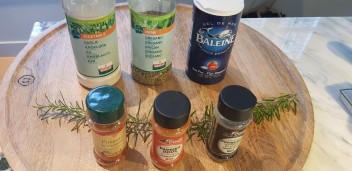
First, the rub. A nice mix of salt and herbs. All sizes are expressed in tea teaspoons of ground substance:
1 of whole sea salt
1/8 black pepper
1/2 oregano
1/8 pepe di cayenne
1/2 sweet paprika
1/8 garlic
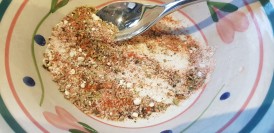
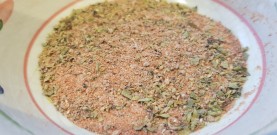
Massage gently the piece with rub evenly
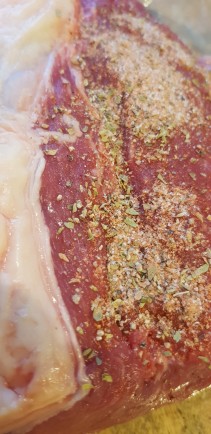
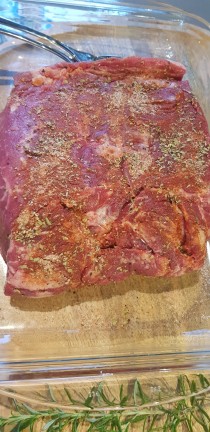
Knot with sprigs and rosemary
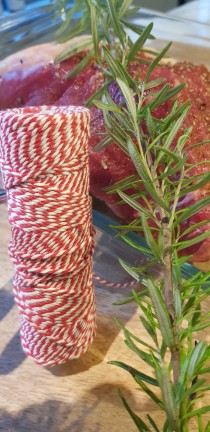
and let stand 2.5 - 3 hours at room temperature..
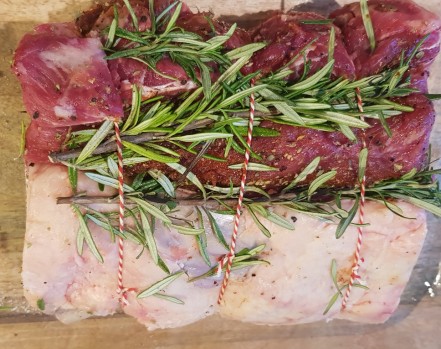
Why do we use oregano, sweet paprika and garlic?
Oregano (or wild majorana) is a plant in the family Lamiaceae. It is rich in minerals, flavonoids, tannins, vitamins A, C, D, E, K, folic acid, fatty acids and Omega 3.
The sweet paprika. It is the food that contains the most carotenoids ever. They are powerful antioxidants great to fight cardiovascular diseases, strengthen the immune system and protect the skin from sun exposure. It is rich in vitamin C, useful for increasing immune defenses and for fighting scurvy. In 1938 the chemist Albert Szent-Györgyi won the Nobel Prize precisely for discovering in peppers a source of ascorbic acid and its power against the disease.
Garlic. Rich in antioxidants, garlic also contains the precursors of allicin, a molecule characterized by antibacterial, antiviral and antifungal activity. This molecule also helps to lower blood pressure and for this reason it is a valuable ally of cardiovascular health.
Step 2: softening/tenderizing. If the meat is Dry-aged move on to step 3
Enzymatic softening. Ventilated oven at 35 ° C for 3 hours
then at 50 ° C for 3 hours and 2.5 hours resting in a cool place.
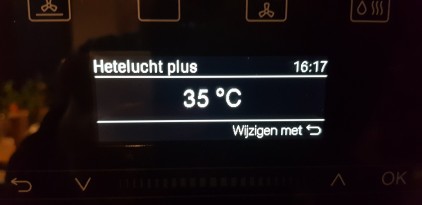
What exactly have we done? Every piece of meat content some enzymes. For us, the most important are the Cathepsins and the Calpains. The cathepsins work best at a temperature around 50°C. Calpaines are activated at temperatures no higher than 40°C. In this state, the enzymes not only contribute to the increase in the tenderness of the meat, but above all they also add more aromas and flavor to the meat after the Maillard reaction (the chemical process that takes place during grilling). By tenderizing meat at a low temperature - the so-called enzymatic tenderizing - you enrich the meat with flavor components that we find in a well-aged "Dry Aged" steak! Passing through a convection oven at low temperature dries out the meat on the outside, contributing to the perfect Maillard reaction.
Step 3: roasting in the oven and Maillard reaction
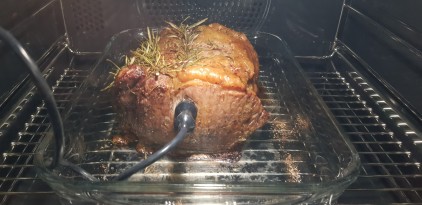
Today it is not possible to proceed a nice result without a good thermometer. You have to know the temperature at the core of the meat. Roasting is a delicate process described by the Maillard reaction. In addition, and most importantly, the reaction, while starting at low temperatures of 80°C, occurs much faster for temperatures above 140 °C. Be careful not to exceed 180 °C to avoid burning the food, as exceeding about 200 °C, benzopyrenes begin to form, compounds of dark coloration (tending to black) and of bitter taste, considered carcinogenic as well as nitrosamines. Adding in your rub (or marinade) vitamin C, E, and antioxidants in general helps prevent the formation of nitrosamines.
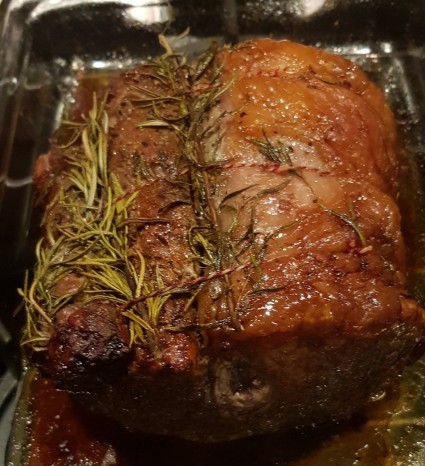
Temperatures to be set in ventilated oven: air 175°C and core 47°C.
As soon as you reach 47 degrees remove the Roast Beef and let stand about 15 minutes covered with aluminum sheet and cloth.
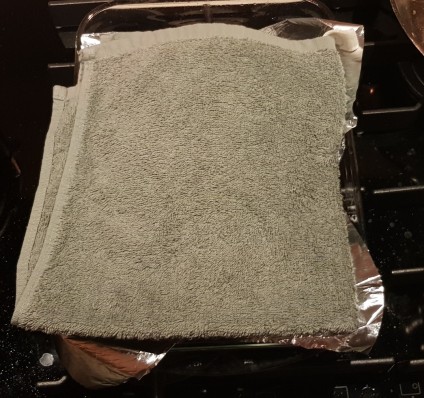
After this period, the temperature at core should be about 52°C.
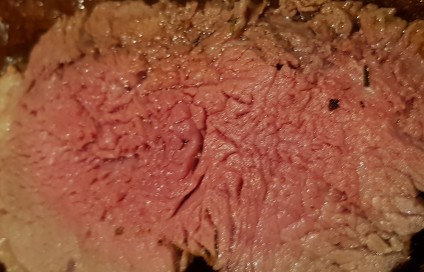
Step 4: cut, stack and enjoy!
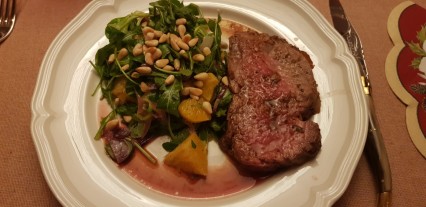
May be just a bit too late for Christmas, but just in time to enter 2021 in the right way.
Update of December 31th 2020:
a good friend of mine, Vincent Castin, ask me to reset the temperature following the French style "viande saignante".
Easy: core temperature 42 degrees Celsius, oven air temperature 180 degrees Celsius. Suggestion mix also a 1/8 tea spoon fructose in the "RUB" to boost the Maillard reaction and have a great bark.
Enjoy. Enzo Sisto
Gerelateerde blogs
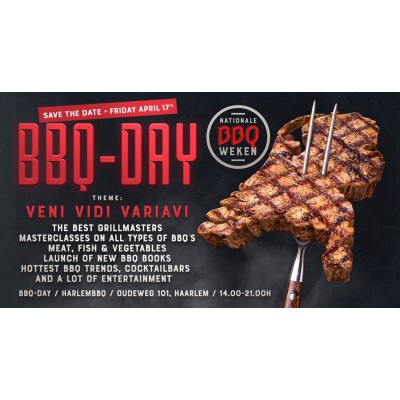
Kick Off Dutch Foundation National BBQ Weeks
Enzo Sisto 1 februari 2020
We will do it again! The Dutch Foundation for The National BBQ Weeks give a great party to open the seasons 2020 in an appropriate sparkling way.
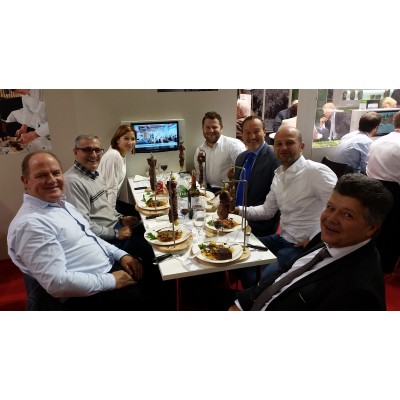
Passion for wine and meat: BEEF & CO. B.V.
Enzo Sisto 18 februari 2017
Beef & Co. in Utrecht (www. rundvleesco.
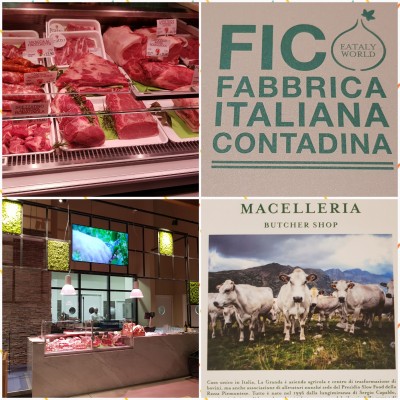
Fico - Fabbrica Italiana Contadina
Enzo Sisto 28 februari 2018
Just visiting the butcher shop in Fico during Marca Bologna . Amazing enthousiastic people working here. I prefere Limousin beef but the Italian Piemontese is not that bad. .